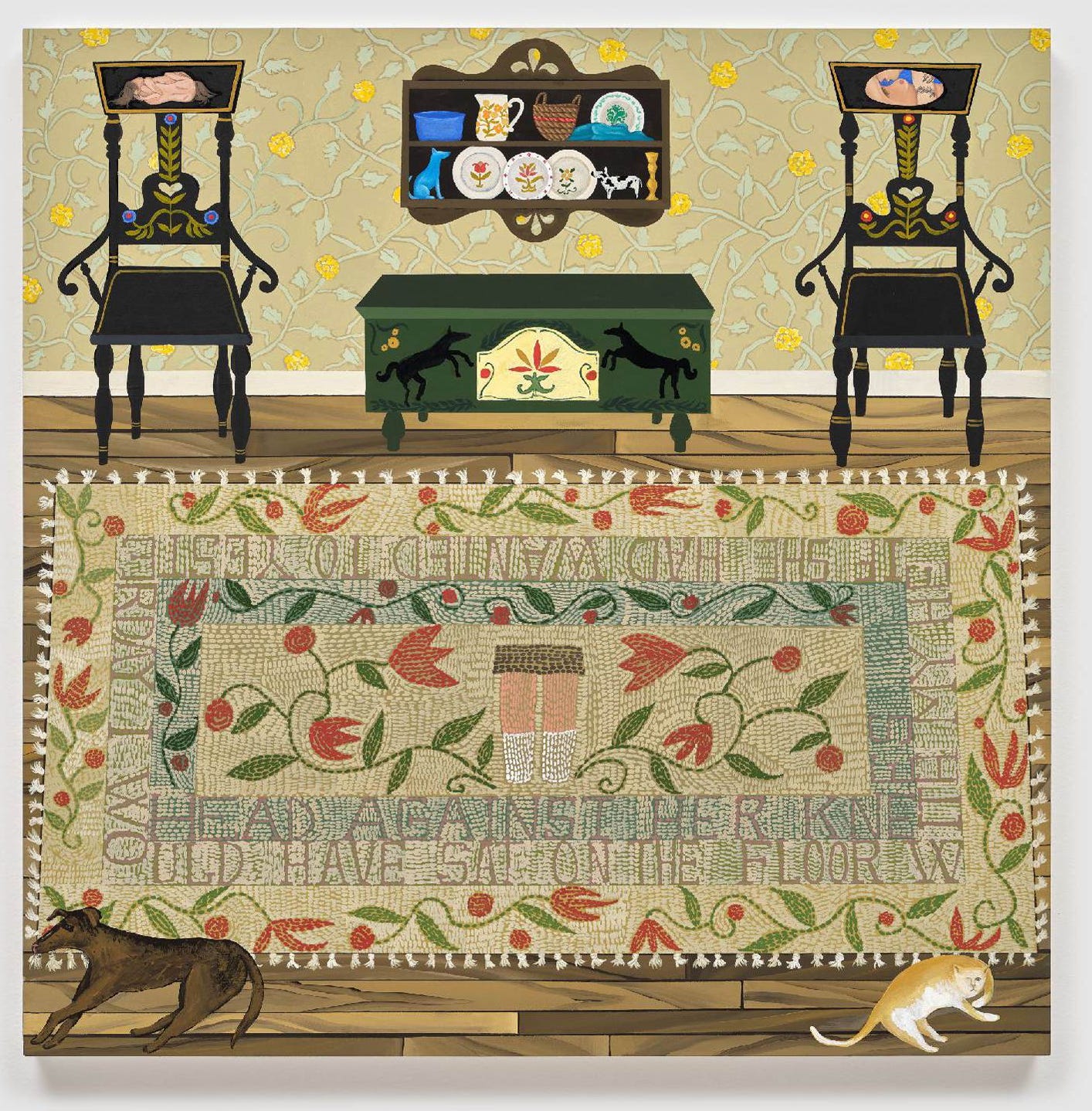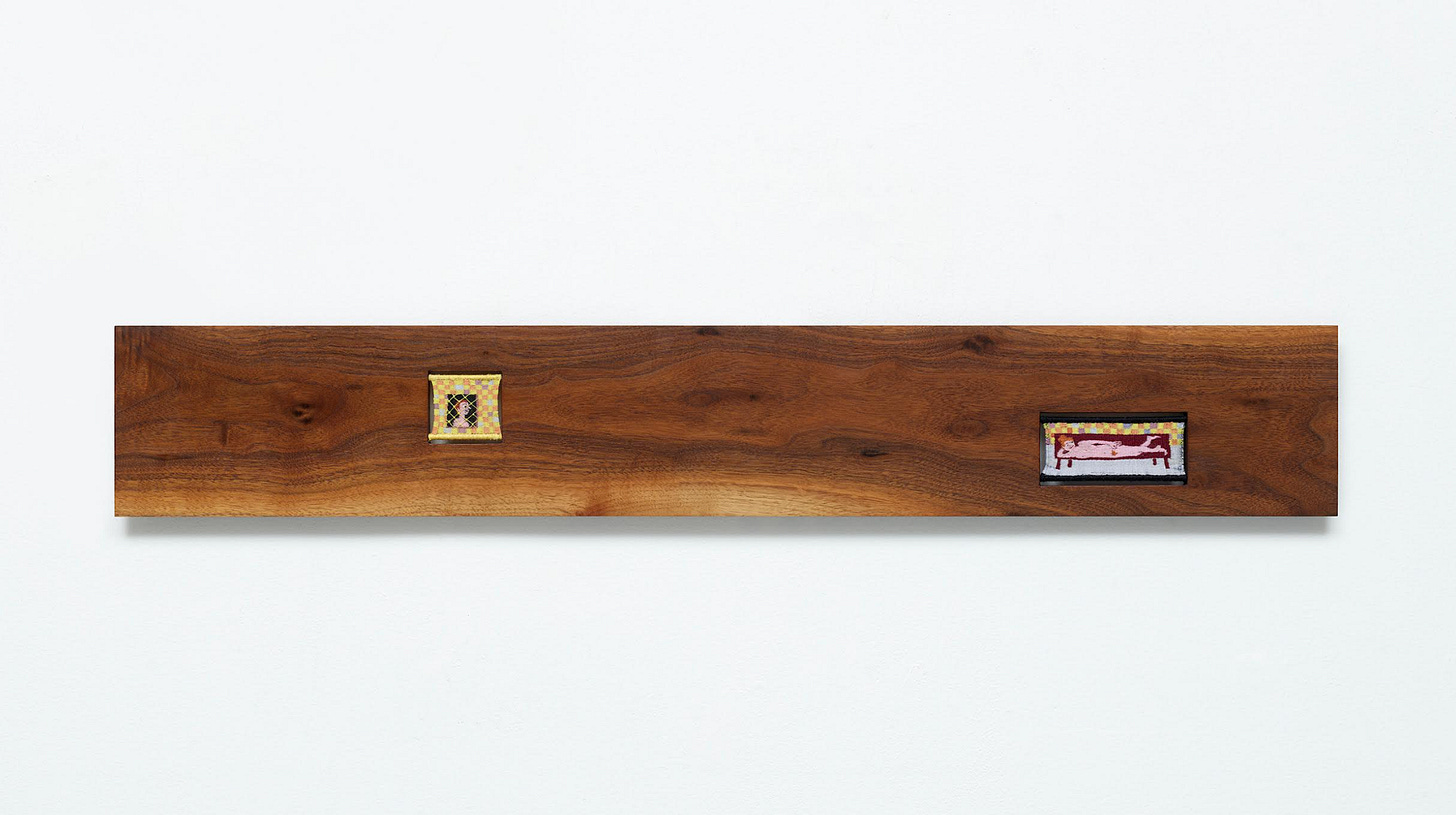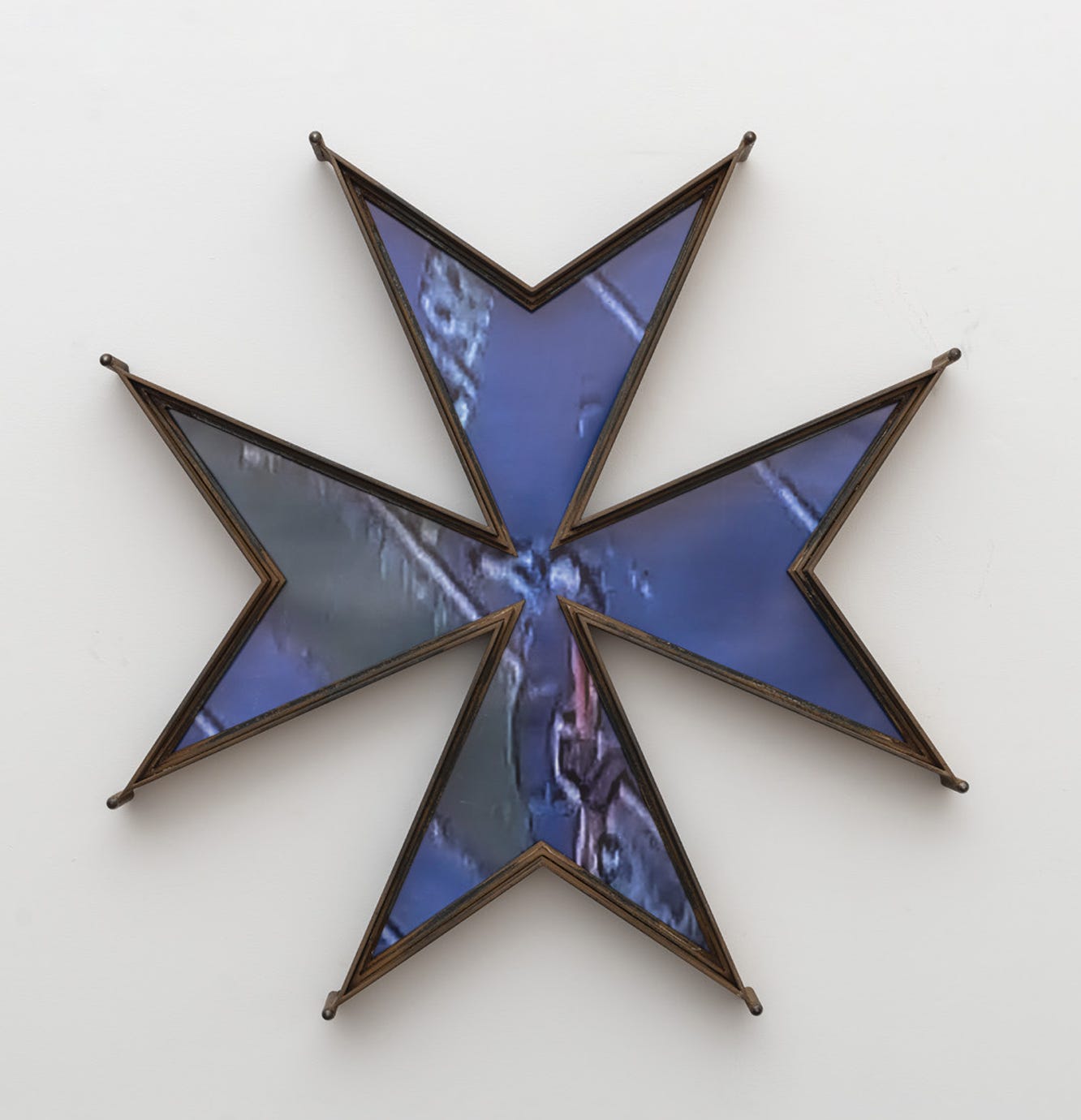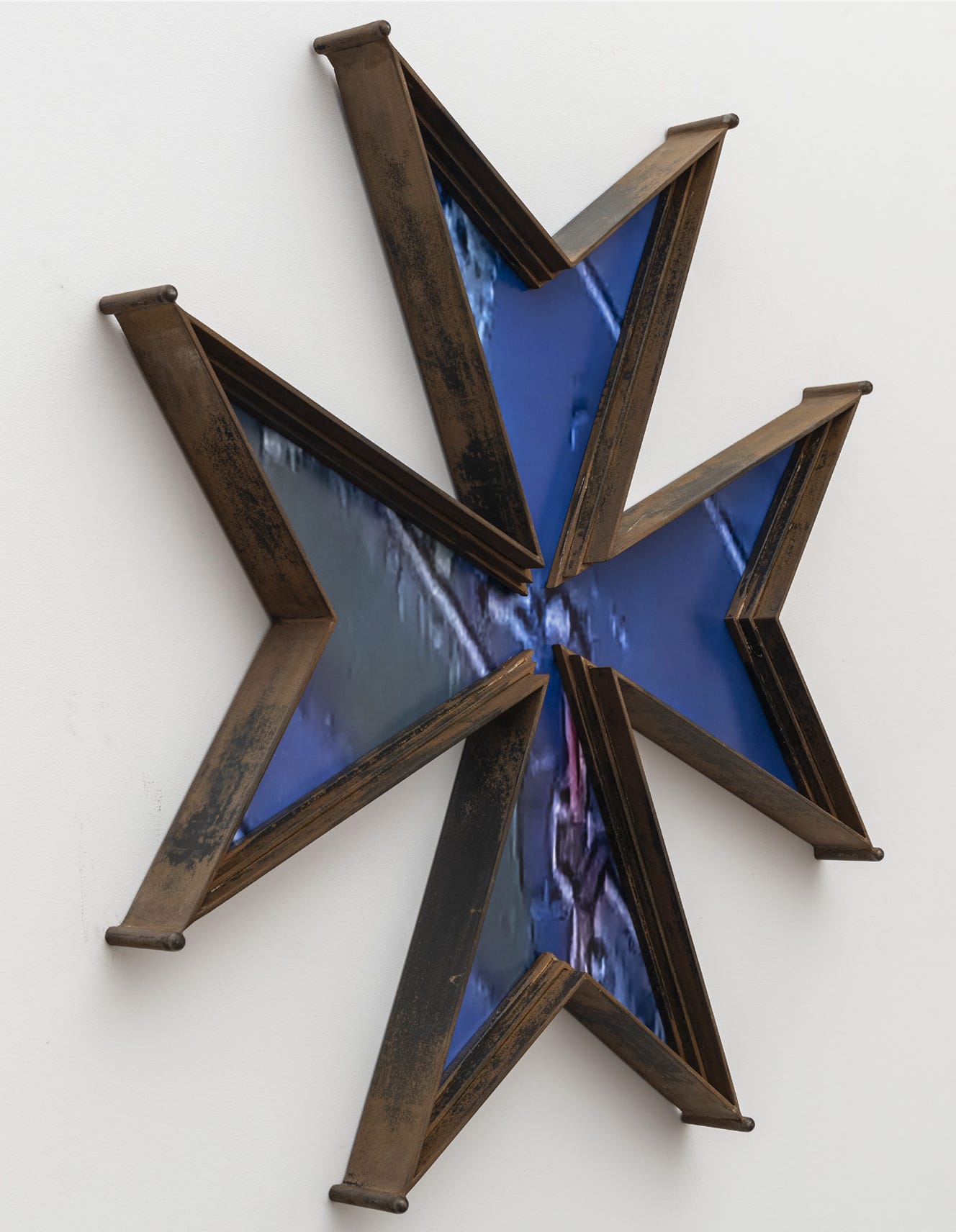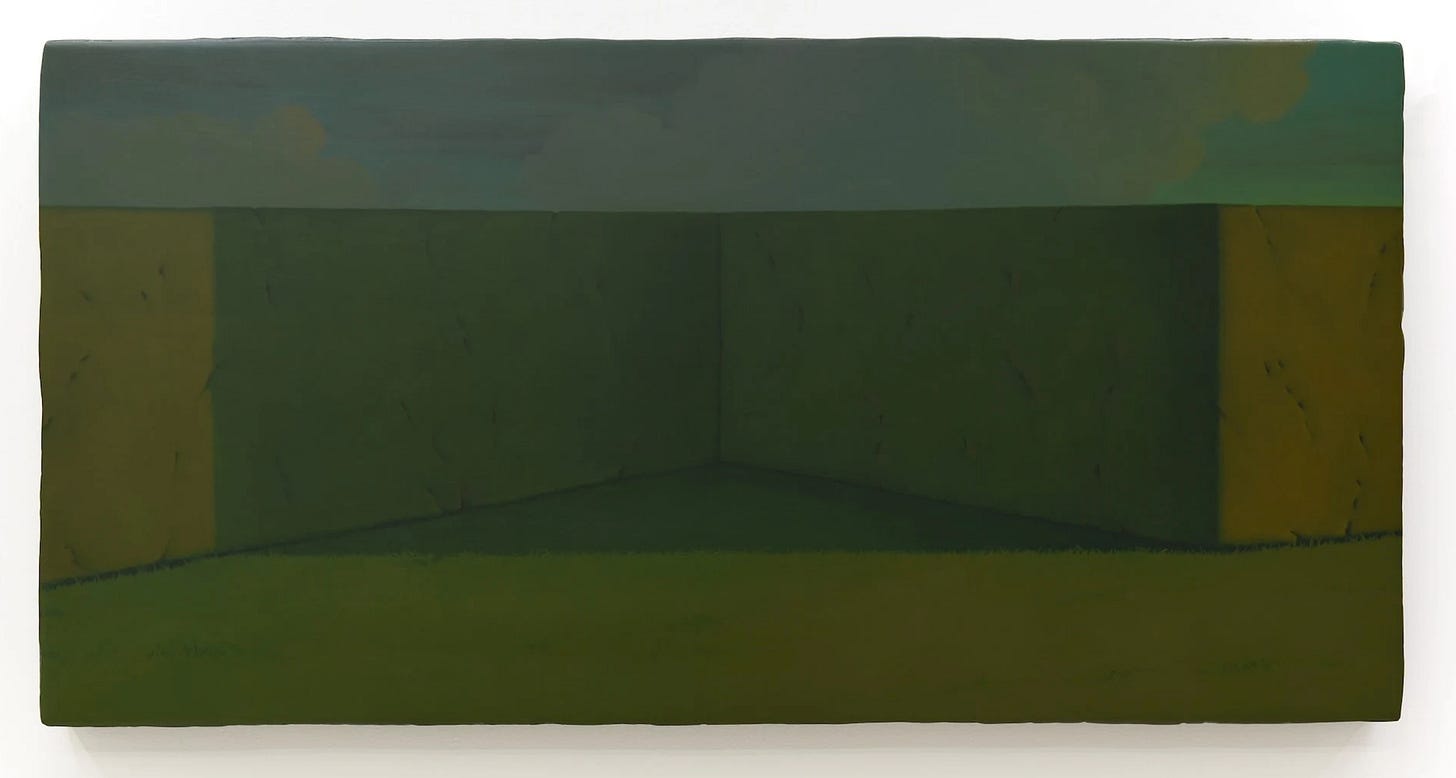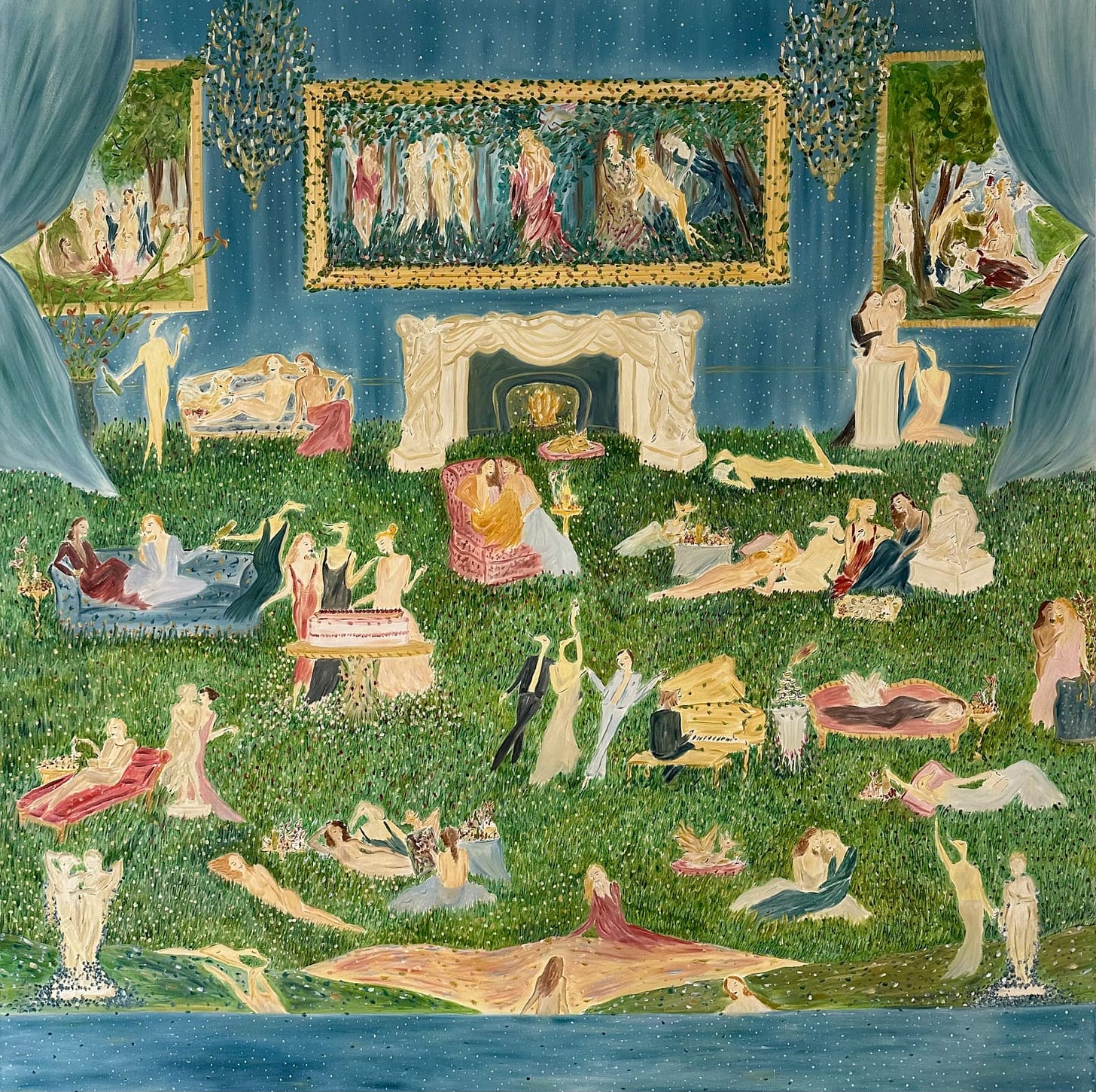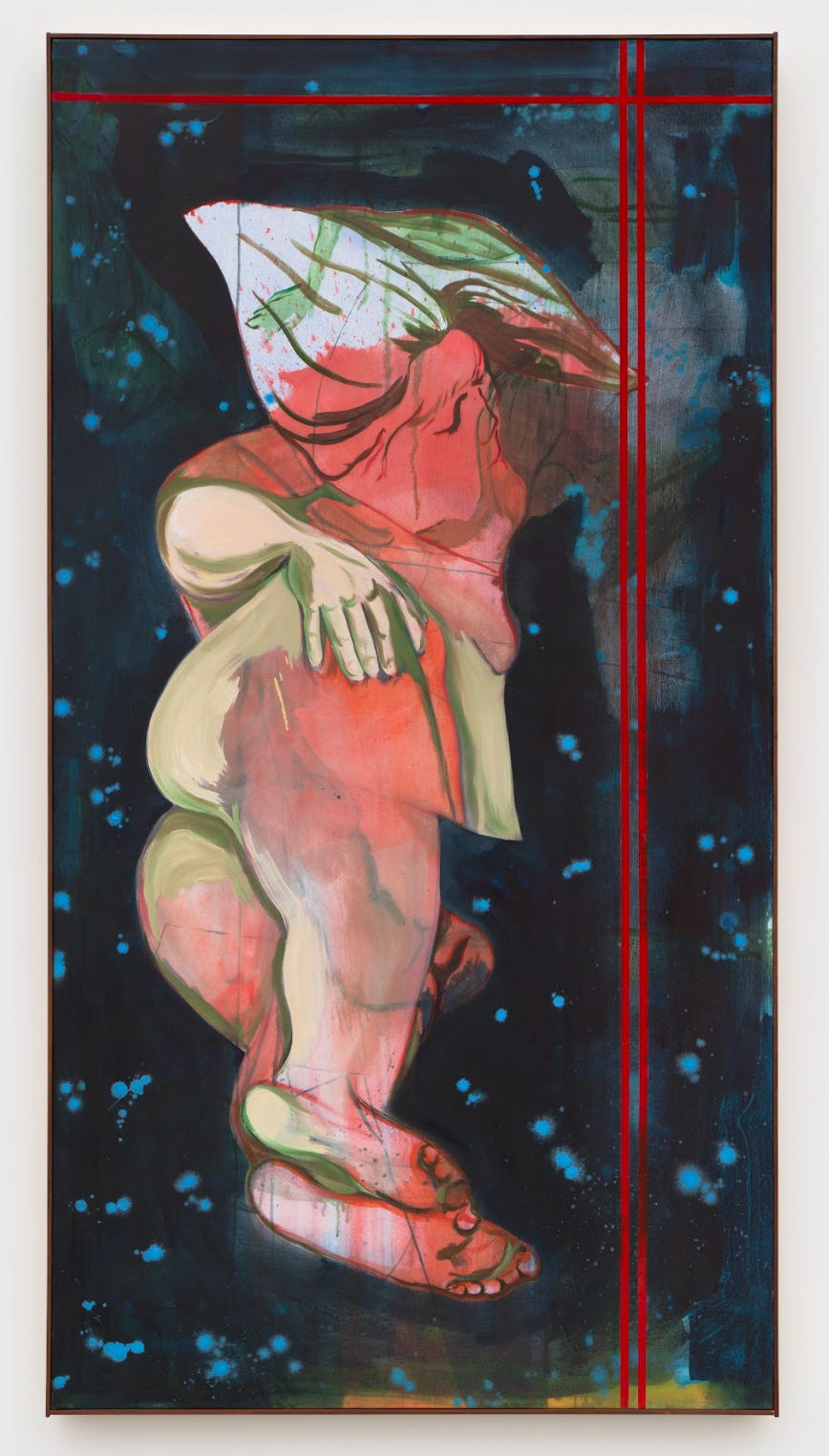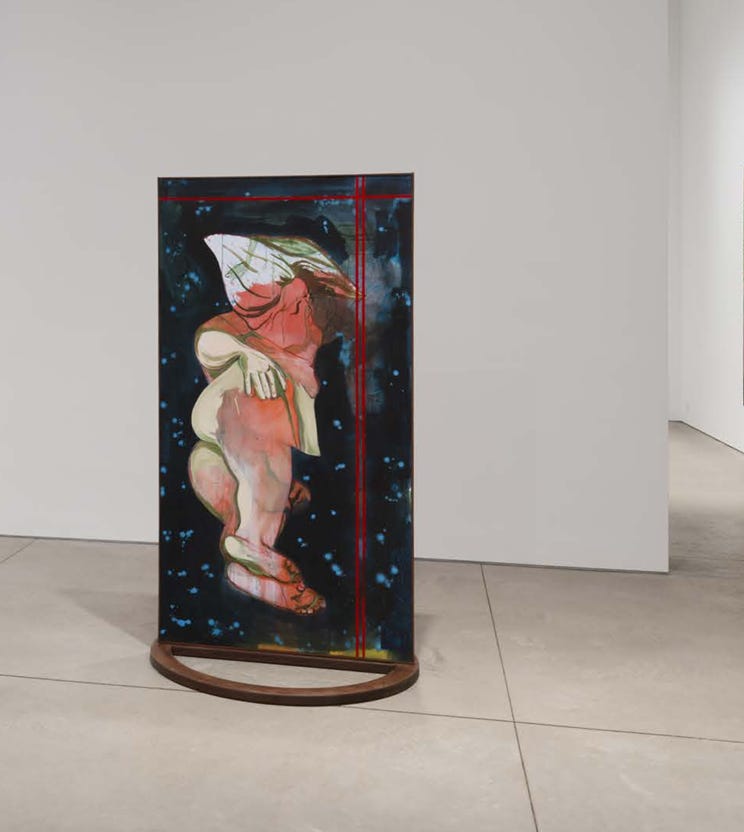Art for Perfect Petrichor Mornings: Works that Unfold Slowly
A deeper dive on six artists and how their works reveal themselves over time
Good morning and happy Wednesday! My favorite day of the week. Today I want to share a little about how I select the works in this newsletter and why I encourage you to connect with me directly if one speaks to you.
Selections come from the hundreds of previews I receive; from the many exhibitions I visit across Tribeca and the Lower East Side (and Chelsea: welcome Kevin Kramer!); and from constant conversations with gallerists and colleagues who highlight artists on their radar. I choose artworks that stand out both formally and conceptually, pieces that feel fresh and unmistakably identifiable to the artist’s practice. This newsletter brings together the strongest of those discoveries, hoping to answer the question many new collectors ask: where do I start.
One of the questions I often encounter with this newsletter is why not approach a gallery directly after seeing it featured in this newsletter. The answer lies in relationships. Advisors often secure terms that are not offered otherwise, from preferred pricing to complimentary shipping or access to works not yet public or knowledge of an upcoming museum show or fair presentation. My 10% commission reflects the time and expertise I dedicate to this research, relationship development, and ensuring a seamless acquisition from first inquiry to installation.
My newsletter places the highest value on transparency and integrity and the galleries know when I feature their artists here. They value and trust the collectors who come through me, and they notice those who bypass the process. Supporting this system honors both the artists and the gallerists who champion them, and it ensures you benefit from the strongest opportunities and advice available.
I hope this deeper dive into each artwork helps take your art collecting discovery to the next level. Let me know what you think - even a reply with one word of feedback is helpful!
Anne Buckwalter
Living Room with Antique Chairs and Anaïs Nin Rug, 2025
Gouache on panel
30 x 30 inches (76.2 x 76.2 centimeters)
$16,500
Anne B is known for painting intimate interior scenes contrasted with graphic sexual references. I love that she draws on her personal Pennsylvania Dutch background for source material such as the furniture, quilts, and rugs, and then intricately weaves sometimes subtle, sometimes not so subtle explicit material.
This particular piece is a great example with many iconic features often found in her work: the classic flat perspective of the room; the square dimension; an interior scene with antique dishware, wallpaper, and furniture; sexy images painted directly onto the chairs; the playful image of just a skirt, legs and boots on woven into the rug; and her reference to nature with the flowers on the rug that are also mirrored on the wallpaper.
Another layer of this work is seen in Anaïs Nin’s words “written” on the rug. Nin was a Bohemian writer known for her own sexual explicitness, and Anne B has delightfully integrated her writings into this painting.
I think my favorite part of this piece is the one-eyed cat in the bottom right. Anne B’s paintings are so voyeuristic in nature, and the winking feline acknowledges that she’s in on it with the viewer.
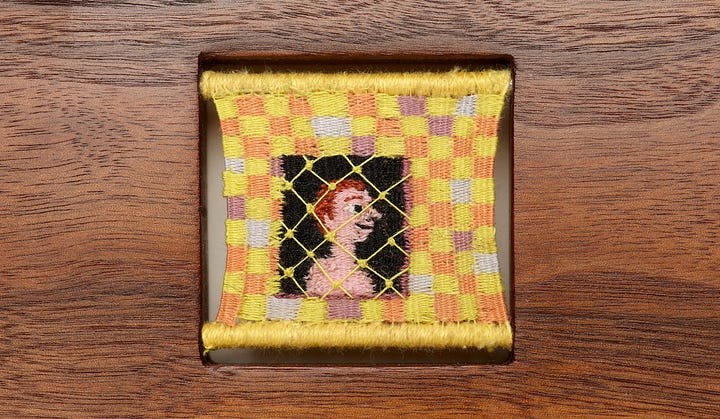
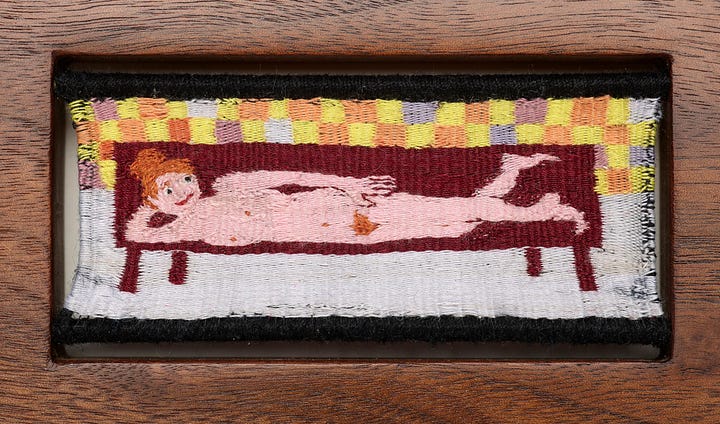
Em Kettner
The Great Admirer, 2025
Cotton, acrylic, and silk thread woven inside oil-sealed walnut
5 1/2 x 33 x 1 inches (14 x 83.8 x 2.5 centimeters)
$6,000
Em is one of those artists who I have featured so many times over the years (here, here and here) and I am so excited to share exactly why she is such a bright artist!
First, I love Em’s use of materials. She carves these insanely beautiful walnut wood pieces that could be works of art on their own, and then imbeds them with these tiny vignettes of precious and often precocious scenes. I’m drawn to the contrast of a material traditionally used by men (carved wood) with a material traditionally used by women (textile threads).
Her work is also cheeky and playful, often with undertones addressing serious conditions of being human. Her narratives can run across multiple works or just within a single piece, and usually her figures can be seen on a stage invoking the theatre and performance.
The work featured above is an example of this, with the left figure gazing at the right figure. Em’s genius lies in the subversion of her figures taking what historically has been a reclining female nude objectified in art history, and empowering her. Em’s reclining figure is facing away from the gazing figure (who is behind a gated barrier) and she’s smiling, indicating the freedom of her choice to pose. The work is titled “The Great Admirer”, further denoting the reverence and respect of the gazing figure.
Another thing that makes Em’s work so special is her dedication to bringing attention to the disability community. In her artist statement, she writes “The miniature scale is a nod to votive objects that were historically placed on altars by the devout as pleas for relief from pain, illness, or deformity; here, however, by referencing familiar moments of physical fragility and mutual support, I’m hoping to revise problematic stereotypes about the disability community and illuminate instead what makes each of us desirable, funny, and powerful.”
Y. Malik Jalal
Regular Pedestrians, 2024
Archival inkjet print from high speed chase footage, forged steel, acrylic
33 x 32 x 2 1/2 inches (83.82 × 81.28 × 6.35 centimeters)
$8,000
By now we all know that I am a complete sculpture fanatic, and Malik’s work is a home run to me. Will Frazier described it best in the Yale Review “Jalal works in the legacy of southern Black craftsmanship as well as the legacy of assemblage—where juxtaposed elements create new paradigms of seeing and thinking.”
Malik welds steel and copper, and assembles them with found images. The images range from car crashes, winning the lottery, and other moments of ecstasy or collision. The imagery acts as a marker for those moments of significance in our own lives - where the impact is so strong whether the words you hear or some physical act forever changes you. I find that near impossible to encapsulate in a work of art but Malik’s practice comes pretty close.
The welded forms in his work are often significant symbols. The work above is in the shape of the Maltese cross, historically associated with the Knights of Saint John. This emblem conveys the order’s ideals of charity, protection, and service to others. Its four arms extend into eight points, traditionally representing the eight beatitudes, as well as the eight diverse linguistic groups that were once all under the protection of the order. I find that inclusivity deeply resonant and important in today’s often divisive times.
The Maltese cross is also recognized as a symbol worn by firefighters, representing courage and a commitment to protect their communities in moments of crisis. I appreciate Malik’s use of this form because symbols like this hold layers of meaning, which is what makes them powerful allegorical artworks to live with at home.
Sarah Schlesinger
Garden, 2025
Oil on canvas over panel
16 x 32 inches (40.6 x 81.3 centimeters)
$7,200
There is hardly an art fair I attend where I do not share a Sarah Schlesinger painting! I am a true admirer of her work and I know you will be as well.
Sarah is best known for her hedges and garden walls, and since we are on the topic of iconography, let’s discuss the idea of barriers. At first glance, her landscapes appear simple, even reductive, but they provoke so many of questions. What lies behind the wall? Is someone there looking back? What exactly is going on here in this quiet landscape? Her paintings tap into our natural human curiosity and our relentless drive to uncover what is hidden so we can understand.
I love how Sarah uses this sense of obstruction to engage the viewer. The barrier invites us to imagine the unseen, to construct our own narrative of what might be beyond. Some of her other works have water horizons or trees, but the above artwork is a classic example of her iconic hedge.
A friend once remarked that Sarah’s works remind them of tennis courts and manicured English gardens, like in Downton Abbey or Saltburn. Though I have followed Sarah’s practice for years, that observation expanded the way I now imagine her scenes. It is exactly that nuanced, grey space allowing layered interpretation that makes her work so interesting to live with.
Danielle Kosann
The World Is Full Of Magic Things, 2025
Oil and ink on canvas
48 x 48 inches (122 x 122 centimeters)
$10,000
Kosann’s paintings are these expansive, joyful universes within each composition that are at once fantastical and also universal. Each paintings offers many mini narratives within the overarching one, and I’ve always loved an artwork where you see something new each time you view the work.
I find Kosann’s paintings to be a fresh, contemporary take in a long lineage of painted social scenes, and I’m always excited to follow where artists will take us next in an unexplored step in the art historical canon. Her figures are demonstrative of community and connection, of emotion and motion interacting in these fervors of engagement.
Her current show is titled “You Still Haven’t Met All of the People Who Are Going to Love You” and I can barely handle the staunch optimism of that statement. The show is also featured in Vogue’s article 15 Women-Led Art Shows to See in New York this Fall. (Quick note they also featured Emma Kohlmann who I told you about back in August!)
Olivia van Kuiken
Hyper Reclined Woman, 2025
Oil on canvas, dyed canvas, artist’s frame
72 1/2 x 38 1/2 inches (184.15 x 97.8 centimeters) Framed
$20,000
I had to include an Olivia painting because I want everyone who reads this newsletter to pay attention to her practice! I am always drawn to painters who successfully straddle their forms between figurative and abstract, and Olivia’s does exactly that. Her paintings resist easy interpretation, and the viewer must constantly search the canvas to make sense of the forms, the background, and the foreground.
Olivia’s subjects oscillate between figuration and abstraction, often stretched or pulled into elongated perspectives. This particular example is closer on the scale to a human figure, but then Olivia doesn’t quite let you accept it completely as she twists the upper body and head into a near incomprehensible perspective.
I also love that this piece belongs to a series of freestanding paintings that can just as easily be installed on a wall. That flexibility adds another architectural dimension to her exploration of form.
Each painting reveals itself slowly, offering new connections the longer you live with it. For collectors, this is the kind of work that grows with you, rewarding patience and sustained attention in an era when attention spans are shorter than ever.


